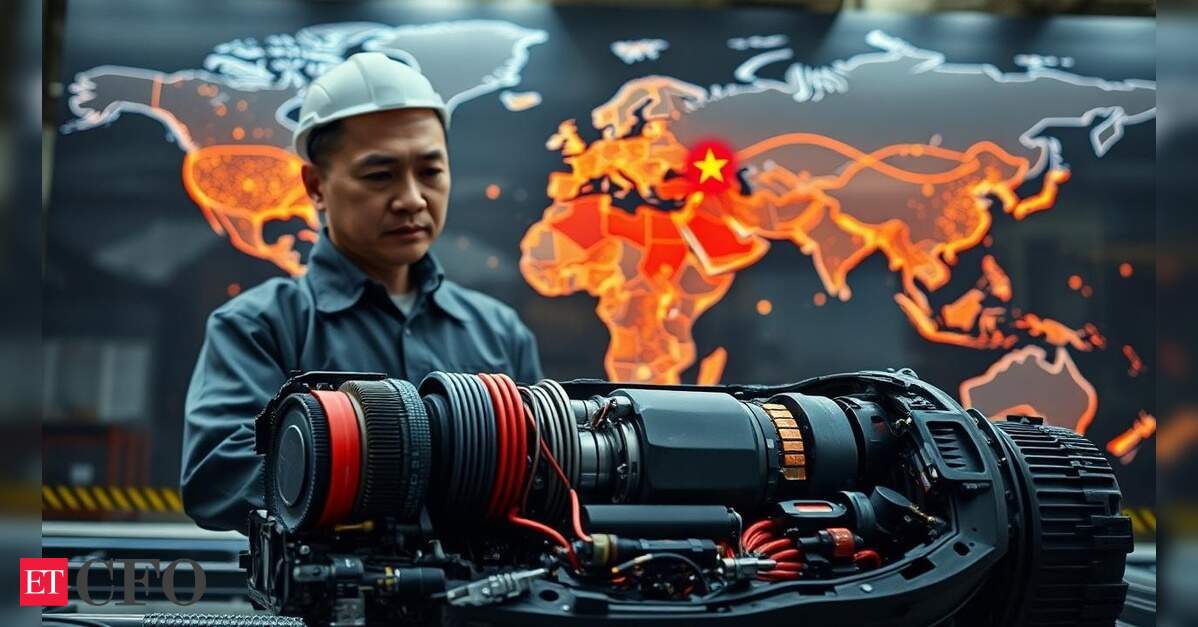My heartfelt condolences to the families of the Air India passengers. The plane crash in Ahmedabad on Thursday stands as one of the most tragic and shocking accidents in recent times. Let us all hope and pray for strength and healing — though we know that nothing can truly ease such profound loss.
Friends from the CFO community, we are holding our NextGen event in Mumbai today/Friday. Click here for all the details.
The world is once again learning that the materials of the future come with geopolitical strings attached. India, aspiring to be a global manufacturing hub and a clean-tech leader, finds itself hobbled by a shortage of rare earth permanent magnets—a problem that threatens to derail its electric vehicle (EV) push, defence readiness, and green energy plans. At the root lies a familiar issue: overdependence on China.
China’s decision in April 2025 to tighten export controls on rare earth magnets has sent tremors through Indian industry. These magnets, indispensable in EVs, wind turbines, consumer electronics and missile guidance systems, are now in short supply. Inventories are projected to run out in a matter of weeks. Automakers are already sounding alarm bells, while electronics manufacturers brace for cascading delays.
This crisis has long been in the making. China supplies around 90% of India’s rare earth magnets and controls a similarly dominant share of global capacity. Its grip extends not just to raw materials but to refining and high-end processing—domains in which India is dangerously underdeveloped.
Since the export curbs came into force, Indian companies have been required to seek end-use licences from Chinese authorities, a process marked by opacity and inertia. Russia, once viewed as a rising alternative, remains a fringe player. Other potential suppliers—Australia, Vietnam, and the United States—lack the capacity or speed to plug the gap.
Meanwhile, India’s own magnet demand has soared. From 12,400 tonnes in FY2021, usage has quadrupled to nearly 54,000 tonnes in FY2025, according to government estimates. The spike is a direct consequence of policy initiatives that promote green mobility, solar and wind capacity, and Make-in-India electronics. But infrastructure without inputs is futile.
Mining time lostThere are signs of action. The government has begun diplomatic engagement with Beijing in an effort to expedite clearances. More importantly, it is considering amendments to the Mines and Minerals (Development and Regulation) Act to ease exploration of rare earths. Public-sector enterprise Indian Rare Earths Ltd has commenced work on a small-scale magnet plant, and broader production initiatives are under review.
But this is reactive policymaking, not foresight. The processing and manufacturing of magnets requires not just raw materials but deep technical capabilities, years of investment, and robust supply chains. India is at least a decade behind where it needs to be.
States like Andhra Pradesh and Odisha hold monazite-rich beach sands that could be tapped for rare earths, but red tape and regulatory inertia have kept them underexploited. Refining capacity—capital-intensive and environmentally sensitive—remains virtually non-existent. Without it, India will remain a shipper of ores and an importer of value-added goods.
A rare opportunity in rare earthsThe current crunch ought to be treated not merely as a supply hiccup, but as a strategic wake-up call. India’s vision of self-reliance must extend beyond finished goods to the materials that make those goods possible. This calls for nothing short of a rare earth industrial policy.
A production-linked incentive (PLI) scheme focused on magnets and allied industries would be a good starting point. It could entice both Indian conglomerates and foreign technology partners to set up shop domestically. Urban mining—recycling rare earths from electronics waste—offers another partial fix. But it needs institutional support and commercial viability.
Ultimately, what India faces is not a commodity shortage, but a strategic constraint. As it builds its industrial future, it must ensure that core materials are not hostage to geopolitical volatility. The rare earth crisis of 2025 is both a cautionary tale and a call to action. India would do well to heed it—and place magnets, literally and figuratively, at the centre of its economic strategy.
Please share your feedback, suggestions if any. You can reach me on amol.dethe@timesinternet.inHappy Reading,Amol Dethe,
Editor,
ETCFO(Editor's note is a column written by Amol Dethe, Editor, ETCFO. Click here to read more of his articles exploring several buzzing topics)





Comments (0)